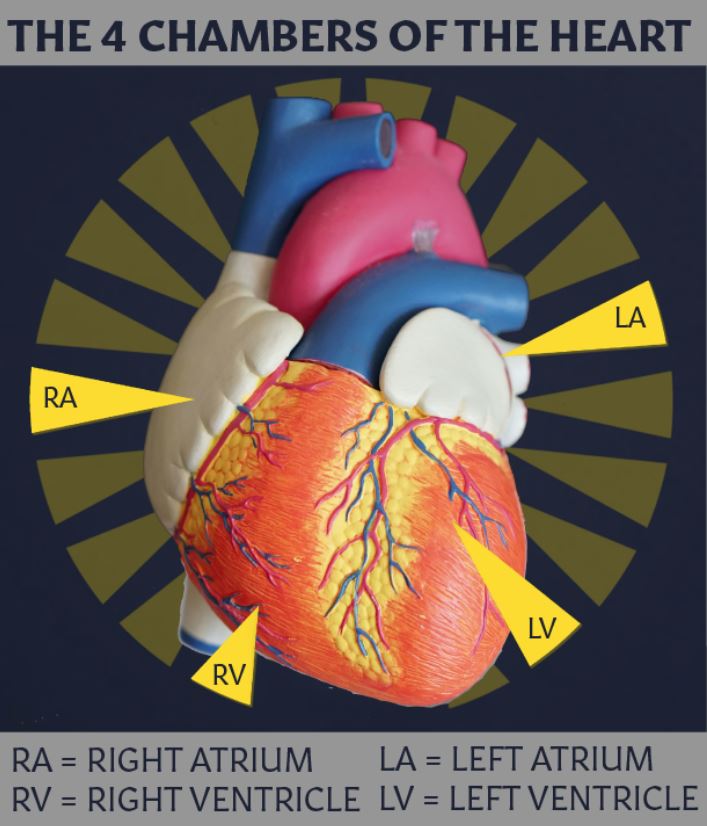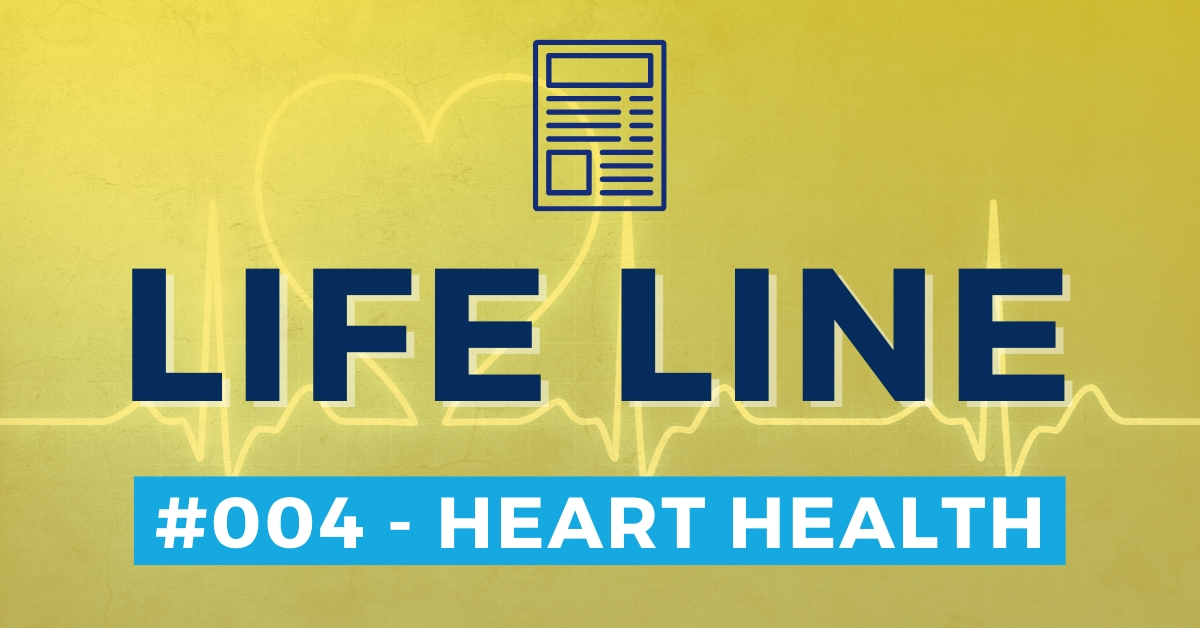Cardio Quest – Be Proactive – Maintain Your Heart Health
Did you know that Cardiovascular deaths outnumber pulmonary deaths and cancer deaths?

Every 37 seconds one person dies from cardiovascular disease – the #1 leading cause of death for men and women in the United States!
According to the World Health Organization, 3 in every 10 deaths throughout the world is caused by heart disease, and according to the Centers for Disease Control and Prevention, 1 in every 4 deaths in the US, is also a result of heart disease.
 Coronary Artery Disease (CAD)
Coronary Artery Disease (CAD)
Heart attacks are caused by Coronary Artery Disease (CAD) – a blockage of blood flow to the heart. The lack of blood causes damage to the heart muscle which then results in a heart attack. Symptoms of CAD can range from no symptoms to chest pain and heart attack.
CAD happens when the arteries become narrowed and hardened due to the buildup of cholesterol and other materials (plaque) on the inner walls of arteries. This buildup (atherosclerotic heart disease) limits the blood flow to the heart and causes high blood pressure.
Sudden Cardiac Death (SCD)
Many of us lost someone to sudden cardiac death (SCD). I just recently lost a dear friend of mine. He was a doctor and lead a very healthy lifestyle for most of his life.
Sudden cardiac death is the largest cause of natural death in the United States and is responsible for 50% of heart disease deaths in the US. SCD should not be confused with heart attacks. Sudden, unexpected cardiac death can happen to anyone regardless of age. We have all heard stories of younger people suffering from “sudden cardiac death” during their athletic activities. The most frequent cases of SCD are in adult males, aging from mid-30s is to mid-40s.
In athletes, often SCD is caused by an “enlarged heart” (hypertrophic cardiomyopathy) when the heart muscle grows abnormally thick. This makes it very difficult for the heart to pump blood, and the heart stops functioning. Unfortunately, this “enlarged heart” condition often goes undetected.
Keep a Steady Beat
The electrical system of the heart is responsible for the contraction and relaxation of the heart muscle. In an adult with a healthy heart, the heart rate is about 72 beats per minute. When this electrical system stops operating properly, the heart begins to beat extremely quickly. Despite this frantic rapid beat, the heart is unable to pump the blood out to the body and the brain. Blood flow to the brain is reduced drastically and without oxygen loss of consciousness follows. If not treated very quickly, this will result in death.
Knowing The Risk Factors for SCD
- A previous heart attack (especially within six months after a heart attack)
- Family history of SCD
- Coronary artery disease (brought about by smoking, family history, high cholesterol, etc.)
- Heart failure (extremely weak pumping of blood)
- History of fainting
- Obesity – linked to diet high in saturated fats, trans fats; higher in bad cholesterol (LDL-low density lipoprotein)
- Diabetes (blood sugar control)
- Certain types of recreational drug use
Other forms of sudden death may be non cardiac in origin, such as respiratory arrest, anaphylaxis, trauma, toxicity, or poisoning.
The most common causes of non-ischemic sudden cardiac death are cardiomyopathy related to obesity, alcoholism, and fibrosis. Unfortunately, with American society becoming more obese, this number is expected to rise.
Be Proactive – Take a Lifelong Control Where You Can
Think of the human body as an amazing and precise machine. Our heart is the pump that keeps transport system moving. When this transport stops, our life ends.
To reduce the risk of SDC from happening we can do the following:
- Change and/or avoid bad habits, such as drinking too many caffeinated or alcoholic drinks, smoking or other recreational drug abuse.
- If you have Diabetes, eat low glycemic food, and control your blood sugar.
- Monitor your Heart Rate – Normal Resting Heart Rate in adults is between 60 to 100 beats per minute (bpm)
- Get a good night’s sleep
- Control your blood pressure
- Be physically active
- Depending on your age, don’t be too active – remember, Balance is everything
- Control your weight
- If we are obese, our resting heart rate could be higher than average. Our heart needs to work much harder to circulate blood throughout our body.
- Enforce a proper diet – Just as the right foods can help us stay healthy, the wrong foods can increase our risk of heart disease, type 2 diabetes, high blood pressure, etc.
- Avoid too salty food – A high sodium diet may increase blood pressure
- Avoid too much red meat
- Control your cholesterol
- Avoid trans fats
- Eat low fat or fat free food
- Eat a heart-healthy diet that includes fruits and vegetables
- Eat a diet rich in fiber (soluble and insoluble)
- Supplement your daily diet with:
- Antioxidants that support Cardiovascular and Brain health (such as Astaxanthin, ViNitrox – apple & grape polyphenols, pine bark extract)
- A natural source of dietary nitrates that boost Nitric Oxide Production and vasodilation (Beetroot, fruit polyphenols)
- Amino acids that are important for heart health, such as L-Citrulline, L-Carnitine, Taurine, Lysine, etc.
- Adaptogens (such as Ashwagandha, Bacopa monnieri, Holy Basil, Lemon Balm) for stress management
- Essential B-Vitamins, Vitamin D3, Minerals (Calcium, Magnesium, etc)
Note: Follow the directions on the product labels and remember – more is not always better!If you are on medication, pregnant or lactating, please consult with your health care professional to ensure none of your “new” supplements will have an adverse interaction with your medication or your health.
Human Heart at a Glance
The human heart is a muscular organ. It is about the size of a large fist. On average, it weighs up to 340 grams (0.75 lbs.) in men, and up to 280 grams (0.62 lbs.) in women. It pumps blood to the entire body through a network of arteries and veins called the cardiovascular system. 20% of the total blood pumped is sent to the brain.
Muscular walls (septum) divide the heart into right and left sides.

- The right atrium receives blood from the veins and pumps it to the right ventricle.
- The right ventricle receives oxygen-poor blood from the right atrium and pumps it to the lungs, where it is loaded with oxygen.
- The left atrium receives oxygenated blood from the lungs and pumps it to the left ventricle.
- The left ventricle is the strongest chamber. It pumps oxygen-rich blood out to the rest of the body.
- Blood is pumped in from the left ventricle through the aortic valve.
- Three leaflets on the aortic valve allow one-way flow of blood. They open and close with each heartbeat.
- The left ventricle’s strong contractions create our blood pressure.
The aorta is the largest artery in our body that begins at the top of the left ventricle. The aorta is divided into four sections:
- The ascending aorta is about 2 inches long and rises up from the heart. The coronary arteries branch off the ascending aorta to supply the heart with blood.
- The aortic arch curves over the heart and gives rise to branches that supply blood to the neck, head, and arms.
- The descending thoracic aorta travels down through the chest. Its small branches supply blood to the ribs and some chest structures.
- The abdominal aorta begins at the diaphragm, splitting to become the paired iliac arteries in the lower abdomen. Most of the major organs receive blood from branches of the abdominal aorta.
Importance of Blood / Blood Flow
- The blood is the transport system by which oxygen and nutrients reach the body’s cells, and waste materials are carried away.
- Blood leaves the left side of the heart and travels through arteries; arteries gradually divide into capillaries.
- In the capillaries, food and oxygen are released to the body’s cells and carbon dioxide and other waste products are returned to the bloodstream.
- The blood then travels in veins back to the right side of the heart, where it is pumped directly to the lungs.
- In the lungs, carbon dioxide is exchanged for oxygen, and this renewed blood flows back to the left side of the heart, and the whole process repeats.
Fun Facts
- About 8 million blood cells die in the human body every second, and the same number are born each second.
- It takes about 20 seconds for a red blood cell to circle the whole body.
- Red blood cells make approximately 250,000 round trips of the body before returning to the bone marrow, where they were born, to die.
- Red blood cells may live for about 4 months circulating throughout the body, feeding the 60 trillion other body cells.
- There are some 5 million red blood cells within a tiny droplet of blood.
- Keeping each red blood cell functioning properly requires anywhere from 10 to 18.18 mg of Iron per day. (Iron is essential for transporting oxygen to each cell)
You Have Heard This Before: Does Our Heart Have a Maximum Number of Beats?
Many studies show that the faster our metabolic rate is, the shorter our lifespan. This means our heartbeats are a marker of our metabolic rate (How fast we age).
For example, a mouse heart beats 500-600 times per minute, and the mouse will live less than two years. In contrast, a Galapagos tortoise heart beats about six times per minute, and the tortoise can live over 150 years.
Keeping Our Heart Healthy Is Vital to Our Longevity and Quality of Life
Heart rate is the speed of the heartbeat measured by the number of contractions of the heart per minute. It is usually equal or close to the pulse measured at any peripheral point.
Our Heart Rate can vary based on our age, our body’s size (physical needs, including the need to absorb oxygen and excrete carbon dioxide). It also depends of medication we take. Some thyroid medication can rise our RHR while some drugs such as beta blockers (block our adrenaline) can slow our RHR.
- The human heart beats around 3 billion times in the average person’s life, pushing millions of gallons of blood to every part of the body.
- The best time to check our resting heart rate (RHR) is when we wake up in the morning and before we get out of bed.
- The best places to check heart rate are the wrist, side of the neck, inside of the elbow, and top of the foot.
- A normal resting heart rate for adults is between 60 to 100 beats per minute (bpm). Abnormal RHR is below 60ppm (beats too slow, bradycardia), and above 100 bpm (beats too fast, tachycardia).
- Having a high RHR increases the risk of premature death. Studies show that for every 10 bpm of heart rate increase, there is a 10 to 20% increase in risk of death.
References:
Kim KY et al.,The effects of astaxanthin supplements on lipid peroxidation and antioxidant status in postmenopausal women. Nutritional Sciences. 2004;7(1):41-46.
Fryar CD, Chen T-C, Li X. Prevalence of uncontrolled risk factors for cardiovascular disease: United States, 1999–2010 pdf icon[PDF-494K]. NCHS data brief, no. 103. Hyattsville, MD: National Center for Health Statistics; 2012. Accessed May 9, 2019.
Heron, M. Deaths: Leading causes for 2017 pdf icon[PDF – 3 M]. National Vital Statistics Reports;68(6). Accessed November 19, 2019.
Benjamin EJ, Muntner P, Alonso A, Bittencourt MS, Callaway CW, Carson AP, et al. Heart disease and stroke statistics—2019 update: a report from the American Heart Association. Circulation. 2019;139(10):e56–528.
Cassuto, J.; Dou, H.; Czikora, I.; Szabo, A.; Patel, V.S.; Kamath, V.; Belin de Chantemele, E.; Feher, A.; Romero, M.J.; Bagi, Z. Peroxynitrite disrupts endothelial caveolae leading to eNOS uncoupling and diminished flow-mediated dilation in coronary arterioles of diabetic patients. Diabetes 2014, 63, 1381–1393. [CrossRef] [PubMed]
Sun, J.; Xu, L.; Eu, J.P.; Stamler, J.S.; Meissner, G. Classes of thiols that influence the activity of the skeletal muscle calcium release channel. J. Biol. Chem. 2001, 276, 15625–15630. [CrossRef] [PubMed]

Meet the Newest Member of Our Life Force Corporate Family
 Armando A. Torrescano joined our team few months ago, as Director of Sales and Member Relations. He projects great positive energy, and is a perfect addition to our Marketing and R&D team. Sonja and I are especially excited to have him on our team.
Armando A. Torrescano joined our team few months ago, as Director of Sales and Member Relations. He projects great positive energy, and is a perfect addition to our Marketing and R&D team. Sonja and I are especially excited to have him on our team.
Armando has an extensive record of designing and producing top tier marketing materials as well as a proven history of success as a top producer in many different industries. Most recently Armando has been heavily involved in the Natural Product Industry overseeing the sales and marketing development and launch of 25+ brands.
After spending nearly a decade working in sales and marketing for multimillion dollar brands and startups, Armando knows what truly drives conversions, sold-out launches, and gaining market share—and it’s not mastering the marketing flavor of the week. It’s how well you connect with the flesh-and-blood people you’re trying to help and communicate your understanding back to them.
Armando holds a BS in Graphic Design from the Art Institute of CA and has extensive business development skills. He happily resides in San Diego, CA with his wife and two beautiful daughters.

Warmest Welcome to our New Members!
We thank you all for taking advantage of our industry – leading business opportunity by joining Life Force as Members and enjoying the benefits of our amazing products.
We also thank you for your desire to help others. We hope that your journey will be fun, joyful, successful, and memorable!


Do you have the list of ingredients anywhere on your site? I am particularly interested in the Cardo products
Hi James,
Here are some links to the individual pages for the products that make up our Cardio Packs:
https://lifeforce.net/product/vitalstart/
https://lifeforce.net/product/intestinal-tone/
https://lifeforce.net/product/aminocharge/
https://lifeforce.net/product/true-greens/
And here is an overview of our Cardio Quest:
https://lifeforce.net/cardio-quest/